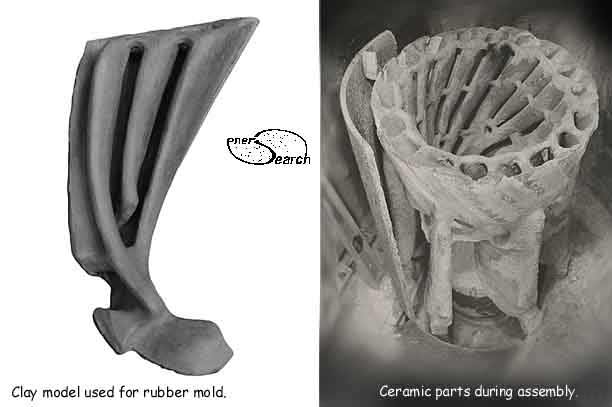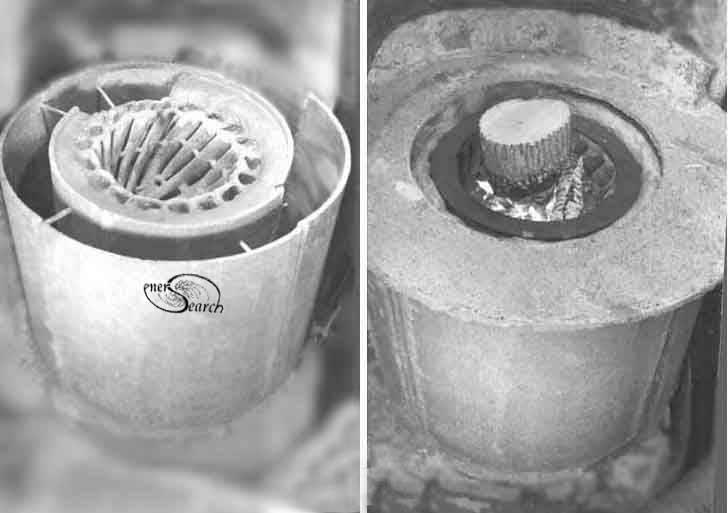
Above: stages from clay modeling
to finished ceramic prototype assembly. The refractory castables here used are
mixtures
of Fondu cement paste by Lonestar Mfg. and the two aggregates were 1)
corundum for the grate portion, and 2) potters grog, used for the curved
walls. Castable refractories are intended for much thicker applications. I worked with very little money and could barely buy these. I tried some other designs, (not shown) in the succeeding years, especially since i could not afford to implement all the VFA features.
One objective
with my VFA research, was to
make the most out of solid fuels. Could a useful byproduct be made
at the same time, as say heating, (at a decentralized, low cost installation). A new, decentralized form of co-generation might include micro scale
cement manufacture. How could one
get these advantages, easily manufactured, today, in a small decentralized- off
grid
burner
system?
Once had,
the user
could
get
the best burn out of what is locally available, especially waste products
which
inherently
need optimal combustion. Yet at the same time have complete, easily maintained,
minimal maintenance costs. Self cleaning, continuous operation, combined with micro-manufacturing capability.
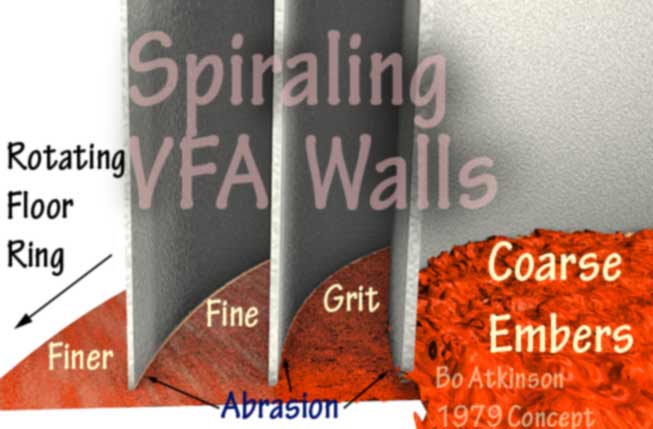
The diagram above illustrates the claim, that the spiraling VFA walls could provide a fixed-grinder-surface. With appropriate rollers, isolated from heat, below the VFA, a refractory ring could continuously turn during the burn period. Therefore the embers would tend to be scraped against the spiraling walls. An experiment was considered to see if appropriate, silica-bearing solid waste, such as rice hulls, could be combined with lime and other minerals, in order to manufacture cement.
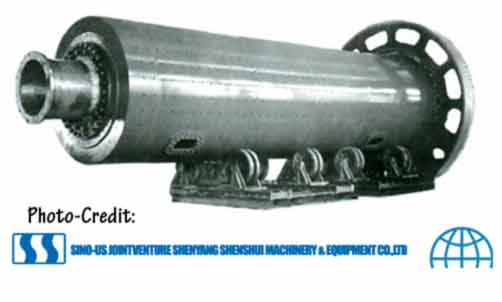
My concept was to compete with currently huge industrial mills like the reference picture found on-line. I was too preoccupied with sustaining my own life to develop my grinder-mill model.
My built model here was in fact adapted primarily to heat space and water with cord wood. It was
encased in insulation and had various "wood chambers" fitted above,
to feed even 8 ft
long
sticks of
wood. (A few pictures of that effort appear further below). Too much liberty was taken with heavy pieces of wood which fell too
hard during high fire. It lasted some years while the grate portion
was gradually pounded away. The spiraling walls (W) remained longer, offering
an extended high temperature zone for combustion.
This first enersearch
research project was named the VFA for "vortex flame amplifier". The
CAD model (at the top of this page) was generated using a 3d modeling
software, (formZ) and a geometric form known as metaball. A small report
was produced
and
published
in
1981. Further development of this research was suspended, primarily due to my single handed, under-funded approach. I increasing found myself heading into self-sufficency, as a life style, accentuated with occasional small construction contracting.
In concept, this burner should fit diverse solid fuel burning needs. Yet my budgets was was extremely small, (as creatives suffer for their art). My experimental installation was fitted with a gravity-fed
chamber above the VFA .Further below follow some
brief details concerning the experimental, fuel loading chambers. Both the earlier VFA and the chambers were hand made with lower costing materials. The VFA was not sufficiently fused in the refractory firing, before time constraints forced me to use 'oversized' logs, (too heavy and consequently damaging). My wife and i found few and occasional jobs, to live on, (but at very low income on average). While winter-house-heating compelled hard use of the experimental VFA. The chamber, was largely ferrocement with customized vermiculite mixes for insulation. Insulation intended to conserve high heat i the burn area. The ferrocement proved porous and allowed chamber fumes to leak into our house-- Enough to eventually abandon the experiment.
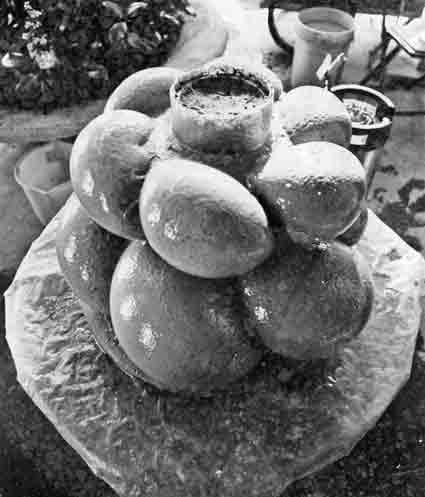
After needing to abandon the 'thin-walled' structures of the VFA, i devised another 3d form with less delicacy, for simplified wood burning. I was still interested in gravity fed bottom burning. Above is the mold made with wire wound tire-inner-tube. It is seen above coated with with wet clay solution to act as a mold release. (It appears in upside down position).

Lacking a good scanner for 35mm negatives of long ago, few of my old pictures can be retrieved. Instead a 3d model rendering is offered instead. The point being that a spiraling-down-draft is induced by the burner-walls. (Naturally the intake and outlet need further detailing. No time to model it all in detail, just now).
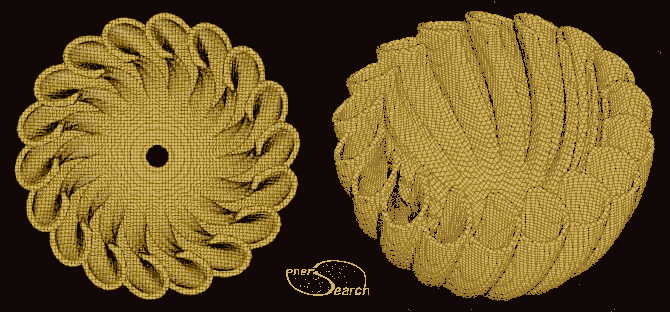
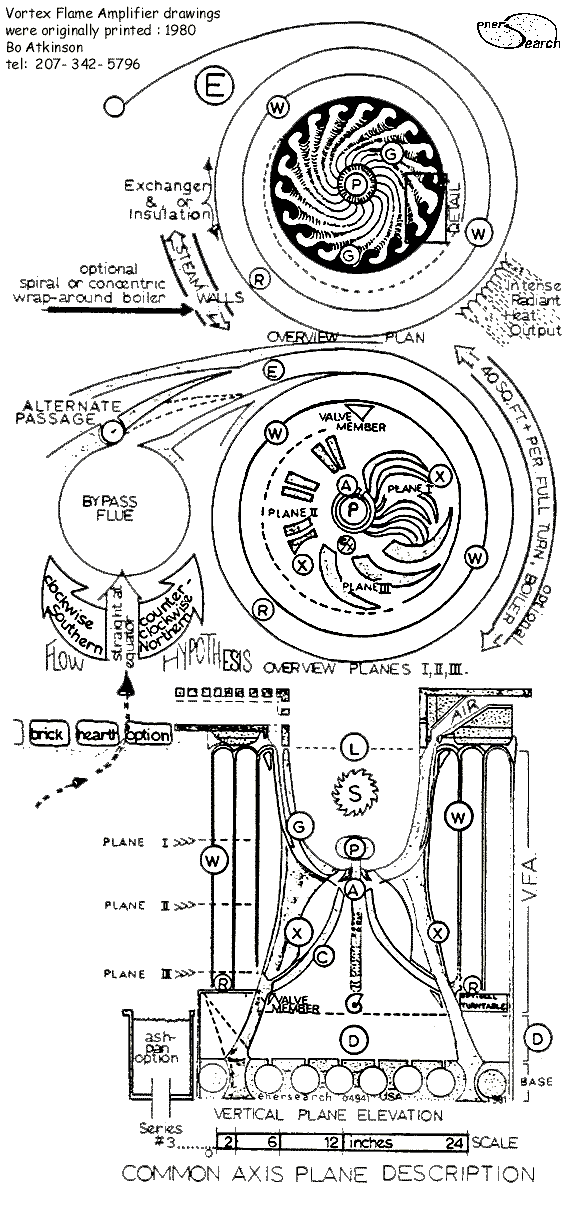
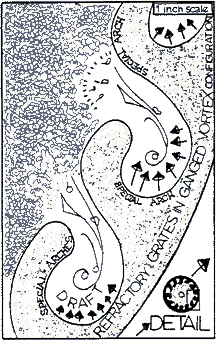 --
--